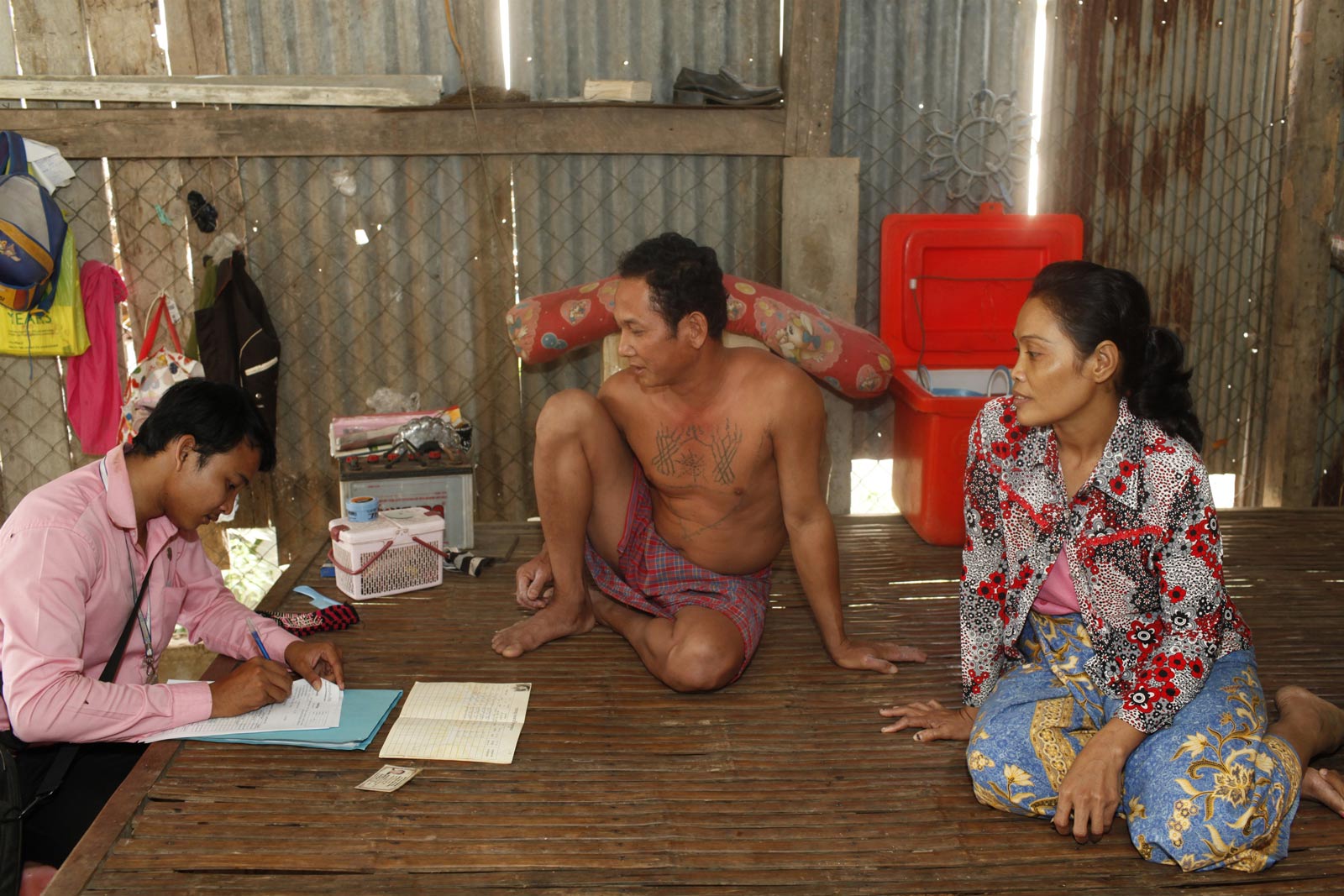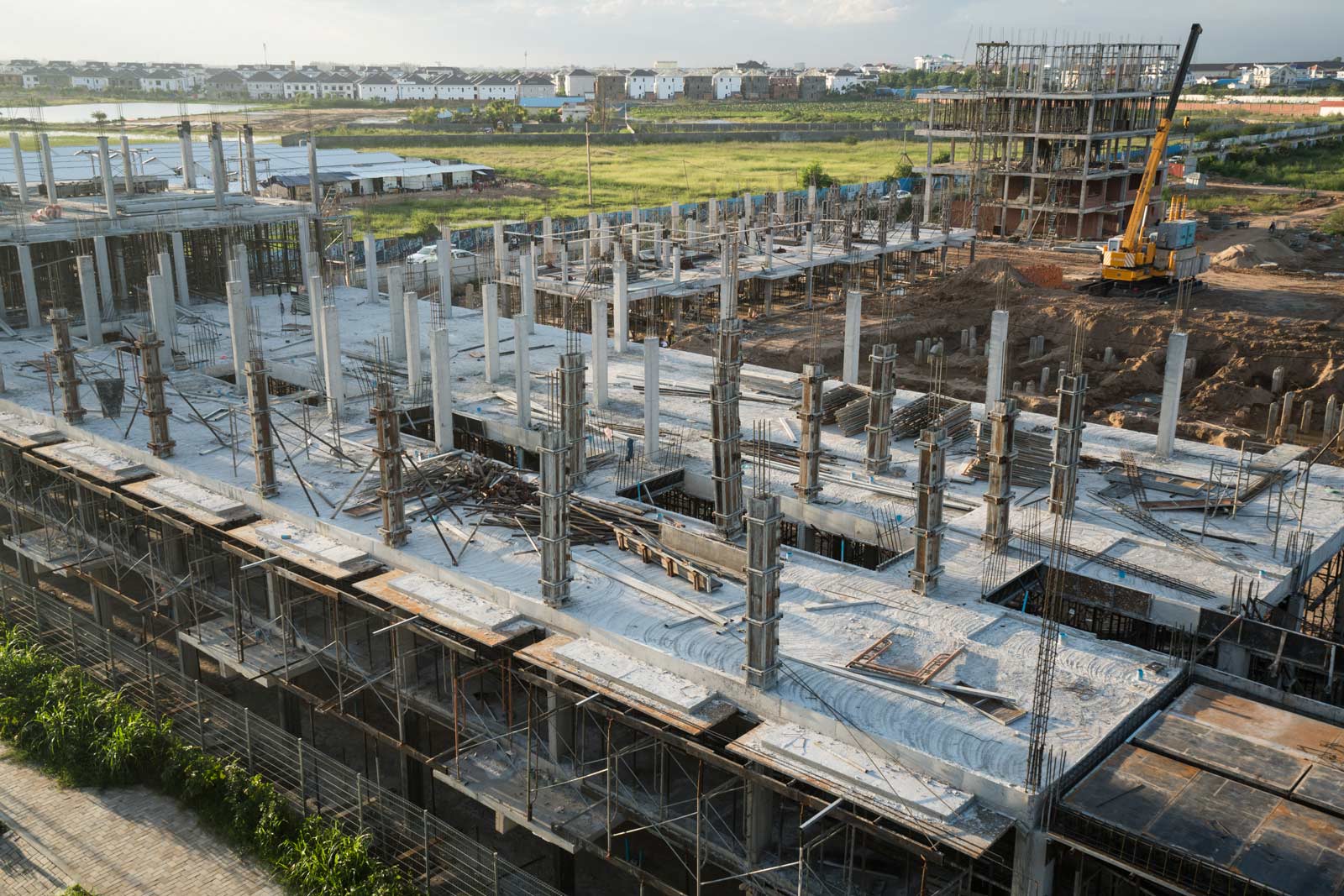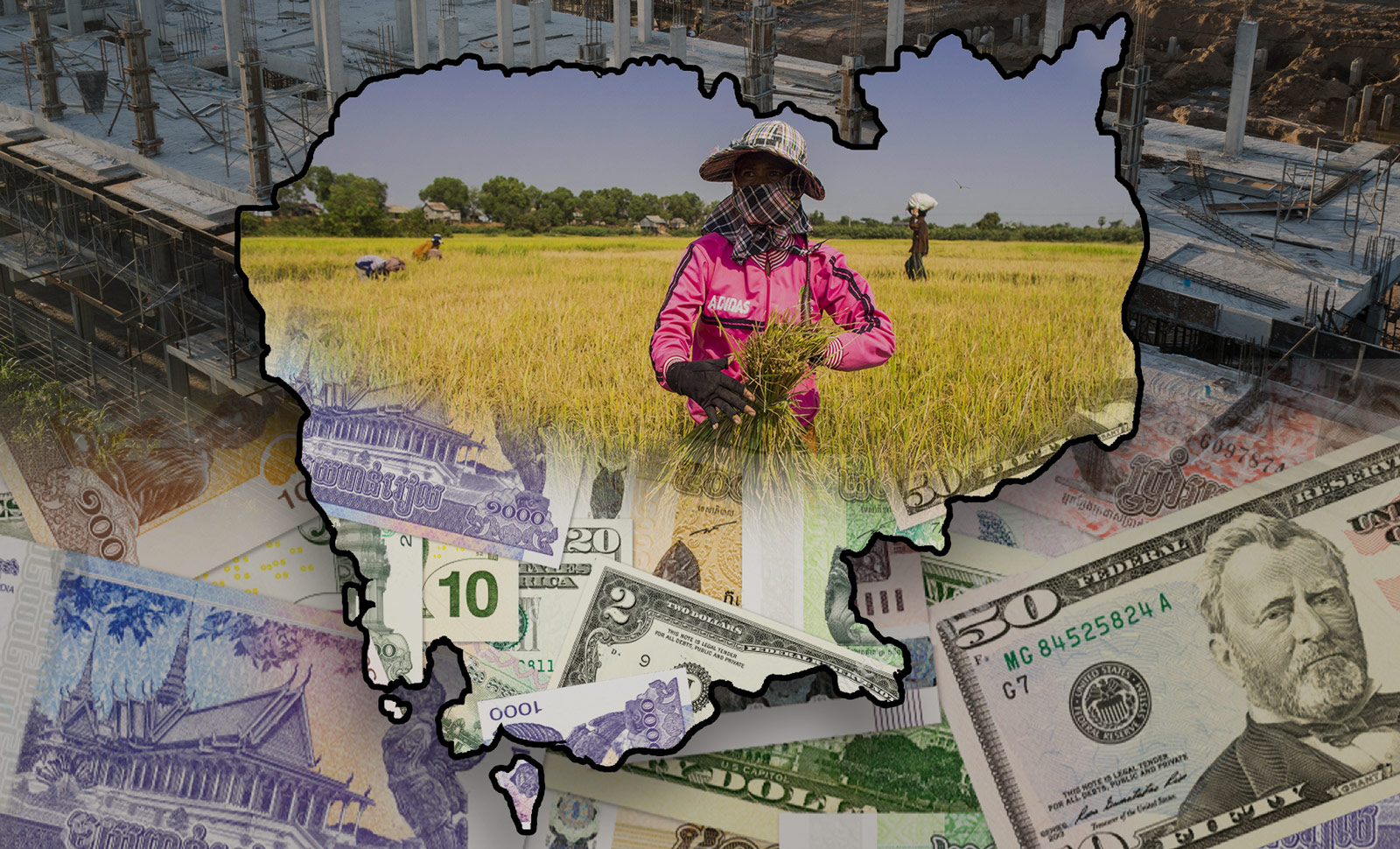As policymakers and commentators debate the significance of how much money Cambodia owes to China – now close to $5 billion – the World Bank’s latest economic update paper reveals something potentially more serious: Cambodians themselves are increasingly dependent on credit.
According to the paper, released in May, outstanding loans provided by the nation’s banking and microfinance sectors last year were for the first time worth more than 100 percent of GDP – or just over $25 billion. Yet this sum doesn’t even include debt ordinary Cambodians owe to the infamous shadow banking sector including loan sharks, pawn shops and real estate developers, making the real weight of total credit much greater. Even the usually panglossian National Bank of Cambodia (NBC) warned in its Financial Stability Review in April about rising individual debt having potentially “destabilising effects on the economy”.
What is striking is how quickly Cambodians have indebted themselves. Outstanding loans from banks and microfinance institutions (MFIs) grew by 19 percent last year alone, according to the NBC’s latest annual report for 2018. As a percentage of GDP, domestic credit to the private sector (a slightly different measurement of debt than the one quoted above) has grown from just 69.5 percent in 2016 to 91.1 percent this year – and is set to increase to 110 percent by 2021, according to the World Bank.
“The growth of domestic credit in Cambodia has been faster than any other country in East Asia – increasing nine-fold in 12 years,” it stated last year in a separate report. Moreover, bank credit as a percentage of GDP is now higher in Cambodia than in Indonesia, one of the world’s largest economies.
Cambodia is still a country where the best escape from poverty remains geographical mobility, not social
Much ink has been spilled in recent years about over-indebtedness amongst the poorest in society, largely the result of a microfinance sector that has expanded far quicker than average incomes have risen. In the decade up to 2014, the average size of a loan from an MFI in Cambodia rose from just $200 to $1,000, which Bloomberg last year reminded us was “twice the pace of per-capita income [growth]” and amongst the highest in the world for microfinance lending.
As early as 2009, the Cambodia Socioeconomic Survey, an annual report by the National Institute of Statistics, warned that household debt was most common among the poorest in society. The survey that year found 46 percent of households in the poorest fifth of society, based on consumption rates, and a further 42 percent of households in the second-poorest fifth, were in debt. Yet just 38 percent of all households across the Kingdom were in debt.
“Poorer households are more likely to borrow from informal moneylenders, have a high ratio of outstanding debt to average annual per capita consumption, and borrow for unproductive purposes such as consumption, medical expenses, cultural and religious ceremonies, or to service existing debts,” the Asia Development Bank (ADB) wrote in a 2014 report on poverty in Cambodia.
The situation was so dire in 2017 that the normally laissez-faire government intervened to cap interest rates on microfinance loans to a maximum of 18 percent per year, when they had previously been around the 25 to 30 percent mark – likely hoping to curry favour with the public during an election year. But it isn’t clear if this made things better or worse. Low interest rates might have helped those with existing debt, but some analysts think it actually enticed more people to take on credit, and even more to roll one loan onto another.

More worrying is that greater access to cash by the poorest doesn’t appear to be actually solving the problem – the opposite, in fact. A report published last December by Lor Samnang, a researcher at the local think-tank Future Forum, found that remittances sent home by Cambodian migrants – the number of which has doubled in the past ten years – actually increases the chance of households being in debt, making Cambodia an oddity in Asia in this respect. (Cambodia is still a country where the best escape from poverty remains geographical mobility, not social.)
While the report noted that mounting debt is a major reason for migration, mainly to neighbouring Thailand where labourers are paid more, it found that families who received remittances had an average increase in debt of 6 percent. The reason given is that money sent home by migrant workers prompts families to take on additional credit.
The report also adds weight to anecdotal evidence that the majority of household debt in Cambodia is taken on not to start a business or expand a company but either for essential services, such as unexpected medical bills or simply putting food on the table, or for non-profitable spending, such as on consumer goods. Only one third of debts surveyed went to financing “economic activities”.
In many ways, this is to be expected. Between 2009 and 2017 household consumption more than doubled from $7.92 billion to $16.78 billion. And the reality that many Cambodians have to rely on credit for the most basic of services is partly the result of a government that has refused to spend enough on welfare.
For instance, the last decade has seen the rapid rise of both tax revenue as a percentage of GDP (from ten percent in 2010 to 15.8 percent in 2017) and the national debt as a percentage of gross national income (35.6 percent in 2010 to 57.2 percent in 2017), according to World Bank data. Yet government spending as a percentage of GDP has actually decreased during the last decade, from 6.34 percent in 2010 to just 5.13 percent in 2017, according to official data. State investment in vital social services has also decreased.
Allocations to the Health Ministry declined as a percentage of the overall state budget, from 7.2 percent in 2013, a general election year, to 6.6 percent in 2019. In fact, spending on healthcare fell by $30 million in real terms in this year’s budget compared to the last (down to $455 million from $485 million).
More worrying, though, is that more and more debt is being taken on so that a few Cambodians can be part of the nation’s real-estate boom – though many would say bubble was the better word. Of the $25 billion worth of outstanding loans financed last year, 80 percent were issued by the banking sector, and the rest from microfinance, reports the World Bank. More specifically, bank loans to the construction, real estate and mortgage sectors were responsible for 40 percent of total domestic credit growth last year.
Such figures make clear that credit for real-estate investment is something mainly taken on by the small percentage of the population that controls the majority of the country’s wealth. In October 2018, the central bank estimated that mortgage credit stood at $1.96 billion, up from just $330 million in October 2012 and $810 million by October 2015.

In the space of eight years, up until late 2018, mortgage credit grew almost 20-fold.
That many Cambodians want to get involved in the real-estate market is only natural. Indeed, asset appreciation in the sector has risen to about 15 percent per year, the South China Morning Post recently reported. It is, no doubt, a sound investment – as long as it pays off, that is. Since at least the late 2000s there have been fears that Cambodia’s housing market is overheating, and that the bubble could rupture at any time.
This hasn’t happened yet; in fact, the market has typically continued to swell each year. Although total investment in construction dropped 15 percent last year, the first quarter of 2019 alone saw an estimated $2.7 billion invested in real estate projects, up 67 percent from the same period last year, according to Ministry of Land and Urban Planning figures.
Yet wise economists stress that financial crashes are like earthquakes; you know where the fault-lines are, but it’s almost impossible to predict when a disaster will take place – and how serious it will be. For starters, the growth of Cambodia’s real-estate sector is dependent on considerable foreign investment, chiefly from China. In fact, Cambodia this year rose to 12th place, from 17th last year, as the most popular country for the Chinese to invest in overseas property.
A little more than half of the nation’s foreign direct investment last year – worth an estimated 13.4 percent of GDP – came from China, according to the World Bank’s latest report. Most of it went into the construction sector.
“The recent surge in FDI [foreign direct investment] inflows has masked the financial sector’s vulnerability caused by prolonged rapid credit growth,” – particularly in the property sector, states the World Bank. Or, to put it more strongly, Chinese investment in the property sector might not just be delaying an inevitable crash, but also disguising the considerable amount of risky credit Cambodians have poured into the housing sector.
If foreign investors pull their money out of Cambodia’s property market, it could prove ruinous for those investments, which are built largely on credit taken on by Cambodians. “Such large foreign capital inflows may not be sustained, especially in a context of increasing global uncertainty and slowdown in China,” the World Bank warns. “The drying up of foreign investment in the construction sector could result in a collapse in prices and expose financial sector vulnerabilities.”
“The issue in Cambodia is of income inequality. The rich, landed classes have certainly gained more from this influx of property investment than the poor”
Economist Intelligence Unit analyst Anwita Basu
Anyone who lives in Cambodia can readily understand another risk in the property sector: oversaturation and ongoing speculation. According to CBRE real estate data, property prices have increased by an average of 6.6 percent over the last five years, though in some areas of the country, namely Sihanoukville and lucrative parts of the capital, they have doubled. Chrek Soknim, president of the Cambodian Valuers and Estate Agents Association, told the Phnom Penh Post in January that last year “land prices climbed around 20 percent, while the price of houses and commercial buildings grew by around ten percent”. And as land prices go up, speculation rises with it.
“Lately, the real estate sector has shifted towards more speculative activity in which there is a growing trend of land sales and purchases with less obvious or justifiable investment returns in the foreseeable future,” states the World Bank.
Again, this has largely been driven by foreign investment. In Kampot, a sleepy riverside town popular with tourists and expatriates, a new port is set to be completed next year which will welcome tourists from China, Vietnam and Thailand. New luxury resorts worth millions of dollars are under construction. Locals report that speculators from Phnom Penh and Sihanoukville have been buying up houses and empty plots of land in the hope of quickly selling them at inflated prices to foreign investors.
Indeed, land near the major developments increased three-fold during the last year, and by about 15 percent in the town centre, a realtor told local media in December. Rare is the week when a journalist fails to report on how ordinary Cambodians are suffering the consequences of Chinese investment in coastal Sihanoukville, where rents, land prices and everyday cost of living have risen dramatically – most deeply affecting those at the poorer end of society.

But not all Cambodians are losing out, as the rising number of locals investing in property shows. The problem is that speculation is leading to a widening gap between the Cambodians with capital and those without. “The issue in Cambodia is of income inequality. The rich, landed classes have certainly gained more from this influx [of investment in property] than the poor,” Anwita Basu, an analyst at the Economist Intelligence Unit, told me in an interview in November. “One of the flip sides of rising property prices is that middle to low income class households [are] required to take on more debt to finance their own land purchases.”
A 2014 ADB report put the problem plainly: “Every indebted household is vulnerable to a certain extent, but debt can lead to destitution for the poorer segments of the population if households are forced to sell productive assets, pushing households further into poverty.” And one of the main “productive assets” that indebted households in Cambodia can sell is their land.
Here, we find a vicious circle. Rising property prices require poorer Cambodians with little access to capital to take on even more debt, and often at higher interest rates than the more wealthy. But, at the same time, increasing debt forces the poorest to sell their land to service debt. The rich are getting richer and the poor are getting poorer – and losing their land in the process.
But as land prices rise, occupancy rates are falling and with them rental prices, especially in the higher-end property sector. A report published in April by real estate consultancy Knight Frank Cambodia stated that the overall occupancy rate for serviced apartments in Phnom Penh fell to 71 percent in the second half of last year, while occupancy of high-end properties dipped to just 51 percent. Moreover, it found that sales of condominiums in the capital slumped 13 percent last year.
Projections by the National Bank of Cambodia in its first Financial Stability Review released in April predict that by the end of the year the supply of condominium and retail spaces is “expected to surge”.
If a significant number of foreign investors decide to sell their stakes in Cambodia’s housing market or simply stop leasing property, rental and sale prices would plummet
“These developments have raised some concerns that perhaps incoming supply might outstrip demand,” it stated.
In December, a report by Standard & Poor’s (S&P), a US ratings agency, included Cambodia in “group nine” of countries with a banking system in peril.
“In our opinion, risks are high given strong credit growth, elevated property prices, and declining asset quality,” its Asia-Pacific Banking Outlook 2019 report stated.
S&P saw that a “correction” in market rates would come about by a flight of foreign investors.
“We believe a correction would be triggered by reduced foreign investment, particularly from China, similar to what occurred in 2008 with Korean investors,” it stated. Such “correction” in the property market would have major problems for Cambodians who have taken on debt to get involved in this seemingly get-rich-quick sector. The “prolonged expansion of domestic credit growth” chiefly on the real estate and construction sector, the World Bank warns, “has overextended the financial sector.”
So how secure is Cambodia’s financial sector? On the surface, the picture is rather sanguine. Estimates by the National Bank of Cambodia released in January contend that commercial banks and deposit-taking MFIs now have deposits of about $22 billion, up 15.3 percent from last year, compared to loan portfolios of $24.5 billion, an 18.8 percent increase. In short, most banks and MFIs have enough money to protect themselves in case the number of defaults on debts suddenly rises.
Yet tremors are emerging. Reported non-performing loan (NPL) ratios in the banking sector rose to 2.8 percent in 2018, up from 2.3 percent at the end of 2017, according to the World Bank. This is low compared to some other Southeast Asian countries, but these official figures need to be treated with care; it has become a widespread practice to use fresh loans to refinance unpaid ones, putting off the inevitable default until the creditor runs out of options.
But the main problem is that Cambodia’s property market – and the credit-lines of its financial institutions – are dependent on what happens abroad. It might be said that Cambodia has over-hedged its position on Chinese investment. Any economic slump in China or caps on outward capital flight by Beijing could spark a downturn in the Cambodian property market. If a significant number of foreign investors decide to sell their stakes in Cambodia’s housing market or simply stop leasing property, rental and sale prices would plummet – leaving locals invested in the market in the lurch.
And many institutions within the financial sector are themselves reliant on overseas funding. Last year saw a wave of local MFIs selling their operations to foreign banks: Samic Microfinance was entirely sold to South Korea-based NongHyup Bank, while AMK Microfinance, one of country’s largest MFIs, sold an 80 percent stake to Shanghai Commercial & Savings Bank.
Cambodia’s powerlessness in the face of overseas economic activity is echoed by its own inability to make major macroeconomic decisions domestically. The Kingdom still uses both the local riel and US dollar, and the vast majority of the economy works through dollars – even after the central bank ruled that banks and financial institutions must have at least 10% of the value of their loans as deposits in local currency by the end of 2019.
“The absence of an independent monetary policy framework, owing to extensive use of the US dollar, severely hampers monetary policy flexibility,” a recent S&P report states. “Foreign currency deposits account for more than 80 percent of broad money, leaving the central bank with setting bank reserve requirements as the main (and perhaps only) policy tool.”
This is the shaky foundation of Cambodia’s debt-fuelled economy – real estate development that no one needs, foreign investment that could dry up at any moment and a deepening divide between rich creditors and poor debtors. And if that foundation crumbles, it will be the Kingdom’s poorest who get buried.


